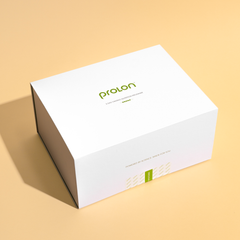
Keto vs Fasting Mimicking Diet: What's Better for Weight Loss?
When it comes to weight loss, there are numerous diets that promise effective results, two of the most popular being the Keto Diet and the Fasting Mimicking Diet (FMD). While both methods target fat loss, they differ significantly in approach and long-term sustainability. Let’s explore both diets to help you decide which one might be the better option for your weight loss journey.
What is The Keto Diet?

The Keto Diet is a low-carb, high-fat eating plan designed to push the body into a metabolic state known as ketosis. By drastically reducing carbohydrates and replacing them with fats, the body is forced to burn fat for energy instead of glucose.
- How the Keto Diet Actually Works: The Keto Diet works by depleting the body’s stores of glucose (carbs), shifting the metabolic process to burning fat for fuel. This leads to the production of ketones, which are used as an alternative energy source. Staying in ketosis requires very strict adherence to low-carb intake, usually below 50 grams of carbs per day.
- Health Benefits of Keto: The Keto Diet has been shown to support weight loss, improve insulin sensitivity, and lower blood sugar levels. Additionally, some studies suggest it may have benefits for neurological conditions like epilepsy and Alzheimer’s. However, it’s important to note that its effectiveness can vary based on individual metabolic responses.
- Challenges of Staying in Ketosis: State Staying in ketosis is no easy feat. The diet requires a precise balance of macronutrients, and even a small deviation—like consuming too many carbs—can kick the body out of ketosis. Many people also experience the “keto flu,” which includes symptoms like fatigue, irritability, and nausea during the initial phase of transitioning into ketosis.
What is Fasting Mimicking Diet?

The Fasting Mimicking Diet (FMD) is a nutrition program designed to mimic the effects of prolonged fasting, without the need for the complete food deprivation of a traditional fast. Developed by researchers at the University of Southern California Longevity Institute, FMD allows you to consume specially formulated foods over the span of five days that keep the body in a fasting state, supporting fat loss and cellular rejuvenation.
- How The Fasting Mimicking Diet Works: Unlike the Keto Diet, the FMD consists of low-calorie, plant-based snacks and meals consumed over a span of five days. This food is scientifically designed to ensure that your body continues to experience the benefits of fasting—such as autophagy and fat burning—while still receiving essential nutrients.
- Health Benefits of The Fasting Mimicking Diet: FMD has been shown to reduce visceral fat, support metabolic health, and cellular rejuvenation through autophagy, the body’s cellular recycling, removal, and repair process. It’s also linked to longevity benefits, as studies suggest it can lower biological age score. The diet provides a structured, short-term approach to fasting, making it easier to maintain while still delivering lasting health benefits.
- Why This is The Better Solution for Weight Loss: For those seeking a more flexible approach, the Fasting Mimicking Diet offers a more sustainable option compared to traditional fasting or keto. By nourishing the body with scientifically formulated meals, you may achieve similar fat loss and metabolic benefits without the challenges of maintaining consistent, daily ketosis.
Key Differences Between Fasting Mimicking Diet and Keto

Both diets support weight loss, but their approaches and long-term sustainability differ greatly. Here are the key differences:
- Flexibility and Ease of Use: The Keto Diet requires daily strict adherence to macronutrient ratios to remain in ketosis, which can be difficult for many people to sustain. On the other hand, the FMD only requires five days and provides a set plan with pre-packaged meals, making it much more convenient and easier to follow.
- Health Impacts: While both diets target fat loss, FMD focuses on additional health benefits like cellular rejuvenation and longevity, thanks to the activation of autophagy. Keto, while effective for fat loss, may not offer the same level of cellular benefits or longevity support.
- Long-Term Sustainability: Maintaining ketosis long-term can be challenging due to its restrictive nature and potential for nutrient deficiencies. On the other hand, FMD is recommended for only an initial three-month consecutive cycle (15 days over 90), followed by three to four cycles yearly to maximize results (about once each quarter) offering a more sustainable solution for long-term weight management without the need for continuous restriction.
Which Diet is Right for You?

Choosing between the Keto Diet and FMD depends on your individual goals and lifestyle preferences. Here are some key considerations to help you decide:
- Consider Your Health Goals: If your main goal is rapid weight loss and you're comfortable with strict macronutrient tracking, Keto might be the better option for you. However, if you’re looking for a more holistic approach that supports both fat loss and longevity, the Fasting Mimicking Diet may be more beneficial.
- Which Suits Your Lifestyle Better? Think about how each diet fits into your daily routine. Keto requires constant vigilance over food choices, while FMD offers a simple, structured program that only requires commitment for five days at a time. If you prefer flexibility, FMD may be the more practical option.
Why Choose Prolon's 5-Day Fasting Mimicking Diet?

The Prolon 5-Day Fasting Mimicking Diet is a scientifically-backed program that makes fasting easier and more accessible. With pre-packaged meals that provide essential nutrients while keeping the body in a fasting state, Prolon offers a convenient and effective approach to weight management and overall health.
- Clinically Backed Results: Developed by leading researchers in the field of longevity, Prolon’s 5-Day FMD has been clinically shown to reduce visceral fat and support cellular regeneration through autophagy.
- A More Convenient Program: Prolon provides a structured five-day meal plan, eliminating the guesswork and making it easier for people to experience the benefits of fasting without the challenges of the food deprivation of traditional fasts or continuous daily strict dieting.
Conclusion: Make an Informed Decision For Your Health
Both the Keto Diet and the Fasting Mimicking Diet offer unique advantages for supporting weight loss. However, if you’re looking for a structured, scientifically-backed program that supports both fat loss and longevity, Prolon’s Fasting Mimicking Diet offers a more sustainable solution.
References: Zhou et al. (2022). The effects of ketogenic diet on weight loss, glycemic control, and lipid profiles: A meta-analysis. International Journal of Environmental Research and Public Health. https://www.mdpi.com/1660-4601/19/16/10429 Torgan et al. (2015). Health effects of a diet that mimics fasting: Metabolic, immune, and longevity benefits. NIH Research Matters. https://www.nih.gov/news-events/nih-research-matters/health-effects-diet-mimics-fasting Verywell Health (2023). Is Ketosis Dangerous? Understanding the risks of the ketogenic diet. Verywell Health. https://www.verywellhealth.com/is-ketosis-dangerous-8699674 Hall et al. (2023). Comparative effects of very low-carbohydrate versus low-fat diets on weight loss and cardiovascular markers. BMC Medicine. https://bmcmedicine.biomedcentral.com/articles/10.1186/s12916-023-02874-y Paoli et al. (2020). Ketogenic diets, physical activity, and body composition: A comprehensive review. British Journal of Nutrition. https://www.cambridge.org/core/journals/british-journal-of-nutrition/article/ketogenic-diets-physical-activity-and-body-composition-a-review/2872800CAE5F54E368EBF8E0A6F1214E












